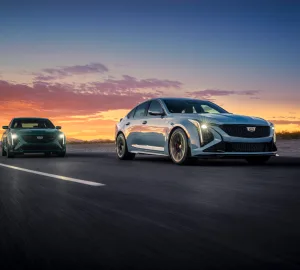Modern cars use a variety of safety features to keep passengers safe. This includes basic features present in the majority of cars on the road, as well as more advanced features that usually appear that take user safety above and beyond the norm.
Basic car safety features
With more than 135,000 reported road traffic casualties in 2019 alone, it’s clear that car safety features are still must-haves. Over the years, some features have become staples, now being found in virtually every car on the road.
- Seatbelts: Reducing the risk of whiplash and car occupants moving after a crash, seatbelts have been a legal requirement in all cars since the later 90s.
- Airbags: Designed to cushion the impact of a crash and prevent injury to vehicle occupants, airbags are most commonly found in the steering wheel and dashboard of the interior.
- Crumple zones: Creating more space between the outside of the car and its occupants, crumple zones allow the car’s body to absorb as much of an impact as possible.
- Anti-lock braking (ABS): This technology prevents the wheels from locking when the brakes are applied in an emergency – reducing skidding and giving the driver greater control.
Advanced car safety features
User safety is one of the key ways that automotive brands seek to differentiate themselves, particularly if you’re in the market for classic models such as Peugeot cars for sale. It is because of this, new and advanced car safety features regularly come into the spotlight with some innovative features including:
- Surround-view cameras: Featuring on many new models such as the ANCAP 4-star-rated Peugeot 308, this feature shows drivers an all-around view of their vehicles – helping them assess and react to hazards more effectively.
- Adaptive cruise control: This is a more advanced version of the cruise control that’s been around for decades, using lasers, sensors, or even radar to detect and measure the distance between cars.
- Electronic stability control (ESC): When a car is about to lose traction, ESC applies the brakes to individual wheels in order to prevent the vehicle from spinning out of control – reducing the risk of accidents caused by skidding.
- Collision warning systems: Using front a rear-end sensors, this system monitors potentially hazardous traffic conditions – by first giving the driver an audio warning, and then automatically stopping the vehicle if the threat worsens.
The future of car safety
The basic car safety features we have today set strong foundations for vehicle occupant safety and the various advanced features build on this, offering an enhanced level of user protection.
Many of these advanced functions are examples of autonomous driving features – the type of technology that could eventually lead to fully autonomous vehicles.
Some commentators are already suggesting that autonomous vehicles could be safer than those driven manually. If this technology becomes advanced enough in years to come, it could revolutionise car safety as we know it.





